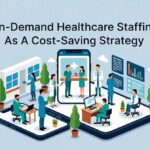Medical facilities and patients face new challenges every day that can impact the level of care, treatment, and service provided or received. In some ways, inflation is to blame. Other things, like device management and staffing issues, create this ripple effect. Below, we’ll explore some of the most common challenges medical facilities face today.
Increasing Costs for Care
Not only is the cost of care inflated for patients, but providers, administrators, and management also feel the rising costs.
Obtaining new devices, upgrading technology, and maintaining a facility with basic needs are at an all-time high. As a result, the offset trickles into how much it costs for patients to receive care.
This increase also impacts a facility’s revenue because all employees need to be paid fairly for their labor. Facilities are facing new financial challenges they may not have prepared for, and it’s causing increased stress and burdens on all medical sectors.
Equipment Malfunctions or Errors
Many facilities face device or equipment errors as technology and components age. With the new financial burdens of maintaining daily operations, replacing and obtaining new equipment is becoming relatively challenging.
It’s time to upgrade the equipment when machines throw error codes or productivity slows altogether. Partnering with a reputable vendor for a leasing agreement is one of the most feasible options for a facility facing daily financial struggles.
The Cost To Obtain Pharmaceuticals
Stocking a facility with the necessary pharmaceuticals to treat patients is a significant aspect of providing safe and ethical medical care. Unfortunately, the cost of obtaining these essential pharmaceuticals and the accompanying equipment is rising.
Not only do these expenses affect facilities and administrators, but they also impact patients because they typically suffer the most.
Arriving at the pharmacy to pick up their new script can send shockwaves through their system, especially if insurance declines coverage for a treatment the doctor deemed necessary.
Staffing Issues and Shortages
A consequence of the COVID-19 pandemic is that staffing is at an all-time low, and facilities struggle to keep up with demand.
This is easily one of the most harmful and prevalent challenges medical facilities face because patients will feel these effects in the level of care they receive without the proper number of staff.
Where one nurse might be assigned four beds on a fully staffed floor, they have to split their time across six to seven beds if a few nurses are out.
Invoice Struggles
While insurance companies are working hard to disburse the appropriate funds, some patients are still required to pay out of pocket for various healthcare costs. Paying invoices is becoming more and more challenging with the economic hardships many people face.
Medical facilities are in the unique position of determining how to work with patients who claim they cannot pay their invoices or need more time to pay.
With the rising costs of running a medical facility and obtaining treatments, patients are paying more than ever for care, food, and housing. This is a significant challenge for medical facilities as debts go unpaid.
Read Also
- Revolutionizing Patient Engagement: Innovative Solutions for Improved Care and Treatment SuccessNavigating healthcare system can often feel overwhelming for patients. Between appointments, prescriptions, and treatment regimens, it’s easy for crucial details to get lost in the shuffle. That’s why effective patient engagement and support solutions are more important than ever. Companies like Serva Health, with their pharma hub services, are stepping up to ensure that patients… Read more: Revolutionizing Patient Engagement: Innovative Solutions for Improved Care and Treatment Success
- On-Demand Healthcare Staffing As A Cost-Saving StrategyThis is an exciting and challenging time for the healthcare industry. Technology is advancing almost faster than humans can keep pace. New legislation is creating fresh challenges for the future of healthcare, and the shifting population demographic continues to place more pressure on healthcare facilities. Amidst these changes, healthcare facilities are facing a critical staffing… Read more: On-Demand Healthcare Staffing As A Cost-Saving Strategy
- The Benefits of Contract Labor Staffing in HealthcareThe most successful healthcare facilities today aren’t just reacting to crises—they are building workforce resilience to withstand them. Unpredictable patient demand, coupled with persistent nursing shortages, has made the traditional staffing model obsolete. Relying on mandatory overtime to cover a sudden surge in capacity is a recipe for high turnover and rising employee burnout relief… Read more: The Benefits of Contract Labor Staffing in Healthcare
- Management Reinforcement for Healthcare Providers in a Shifting SystemHealthcare is changing faster than ever. So, providers are feeling the pressure to keep up. New technology, changing patient needs, and constant rule updates make it tough for managers to stay on top. Strong leadership helps teams work better, give great care, and stay happy in their jobs. Here’s how healthcare leaders can strengthen their… Read more: Management Reinforcement for Healthcare Providers in a Shifting System
- Why Effective Disinfection Remains the Foundation of Public HealthFrom hospitals and schools to transport hubs and food production sites, disinfection is central to breaking the chain of infection and protecting community health. The COVID-19 pandemic highlighted how crucial surface hygiene and environmental control are in reducing the spread of harmful microorganisms. Yet, beyond emergency response, routine and validated disinfection practices remain the cornerstone… Read more: Why Effective Disinfection Remains the Foundation of Public Health
- How to Navigate Your Medical Assistant Career PathBecoming a medical assistant can feel both exciting and a little stressful. This job lets you work closely with doctors and other healthcare workers to help patients. But with so many different paths to take, it can be hard to know where to start or how to plan your career. Wouldn’t it be nice to… Read more: How to Navigate Your Medical Assistant Career Path







